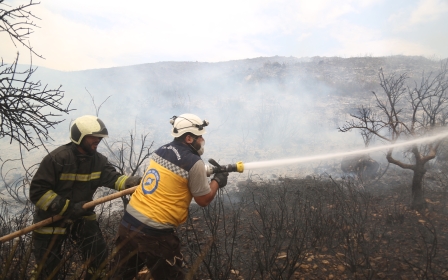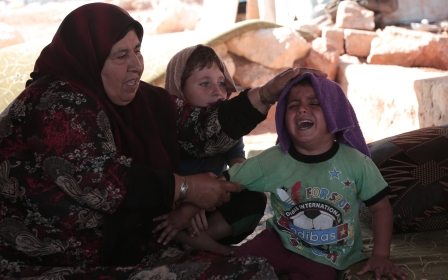In pictures: Milky Way shines above ruins of Syria's war
Pictures taken in the Idlib region in northwestern Syria show the Milky Way galaxy emerging high above the ruins of villages and towns bombed by Syrian government and Russian forces.
The appearance of the galaxy that contains our solar system is particularly noticeable in the summer during moonless nights. (All photos Middle East Eye/Assad Al Assad)
The appearance of the Milky Way offers a welcome relief from a nine-year war that has displaced millions, and reduced cities to rubble, including nearby Jericho and Binnish.
Harbnoush camp, in the northwestern part of Idlib city, is now home to more than 30 families, who have spent the summer camped under the stars.
Yasser al-Rahim, a 12-year-old boy, said: "I, my father, my mother and my sisters have been living in tents for nearly a year, exactly since the warplanes bombed our city, Maarat al-Numan, with all kinds of missiles."
Yasser Tarafi, a 35-year-old resident of Harbnoush camp, said: "I have been living in this camp for more than two years. We suffer a lot in summer and winter, and we live in these tents."
"We sit at the door of tents on such starry nights to contemplate these beautiful scenes and hope that we will return to our homes and stop living under the shade of tents," Tarafi said.
Children sit outside their tents on the hot summer nights. Daytime temperatures can hit as high as 47 degrees in northwestern Syria.
"I used to watch these stars from our house in Maaret al-Numan and they were very beautiful. I used to sleep on the roof of the house on such summer nights, but now I live in this tent and our house was destroyed by bombing. These stars are not as beautiful as they used to be," young Yasser al-Rahim said.
Middle East Eye propose une couverture et une analyse indépendantes et incomparables du Moyen-Orient, de l’Afrique du Nord et d’autres régions du monde. Pour en savoir plus sur la reprise de ce contenu et les frais qui s’appliquent, veuillez remplir ce formulaire [en anglais]. Pour en savoir plus sur MEE, cliquez ici [en anglais].




